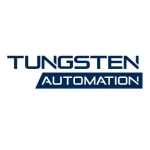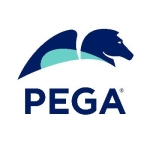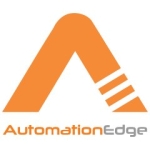What is our primary use case?
We are usually asked by clients to introduce the topic of RPA and bring it to life for them. We explore what the value proposition of adopting a new technology is for them. We typically enter the discussion with an agnostic view of tools, help them understand what the differences are between tools and capabilities, and then synthesize a business case for adoption of those tools.
How has it helped my organization?
The perfect example that I have is where we're able to address an audit finding for a client. They had a situation where they had to show a tangible and very scalable solution to an internal audit as part of a finding that they had in the payroll area. In that situation, we created a database for them that worked alongside Automation Anywhere to conduct the validation and checks that were required to appease and provide comfort to the internal audit, while accomplishing savings in the form of error omissions.
We automated processes within: finance, accounts payable, accounts receivable, invoicing, validation, HR, payroll, onboarding, candidate screening, and IT from a provisioning perspective.
What is most valuable?
The value of RPA in general is the ability to actually emulate human behavior and transactions. The value of Automation Anywhere, specifically, lies in the ease of use that it has as a platform and the ability of individuals to learn relatively fast. There is a very accelerated learning curve on the platform.
What needs improvement?
The IQ Bot is a tremendous product. The more we can make the IQ Bot intuitive, as an application, and start connecting it to real-life examples, the more value it's going to bring to clients.
The human training area is still something that needs to be improved. It's not so much the actual technology learning, but rather how you bring this to life with all the peripheral competencies that are needed for it. Incorporating some of the Lean Six Sigma type of principles into the process optimization, as well as the change management, would make it a much more comprehensive solution than what it is today.
Buyer's Guide
Automation Anywhere
April 2025
Learn what your peers think about Automation Anywhere. Get advice and tips from experienced pros sharing their opinions. Updated: April 2025.
849,190 professionals have used our research since 2012.
What do I think about the stability of the solution?
I think the tool has come a long way. We've had situations where it wasn't working well with Java in the past, then Citrix environments, etc. Every new release is better than the last one. They are listening to the customers and they definitely integrate the solutions to their product very fast.
What do I think about the scalability of the solution?
I think it's a very scalable application as well, but I think the scalability is not just tied to the technology itself, it's also the organizational appetite to go fast and go the right way forward. The huge component of that is talent, and I think Automation Anywhere, with the internal consultants that they make available to clients on occasion, does accelerate the adoption.
From a pilot to scale, I would say the couple of clients that I've actually worked with took about six months to one year to get to what we would consider a repurchase point, but I wouldn't necessarily call that scale. The model that we bring forward to clients, at least in the past, was one where we actually teach them how to fish versus fishing for them, so we're not necessarily there to see them all the way through scale. We're there to see them through stability.
How are customer service and support?
I think the technical support team is very responsive. This is probably one of the differentiators that Automation Anywhere has in comparison to some of their peers.
Which solution did I use previously and why did I switch?
I had other platforms that we did the proof of concepts for, but they didn't go anywhere. I think part of the reason why they didn't go anywhere is because they were not scalable.
How was the initial setup?
The initial setup, at times, has been a little undefined, in terms of requirements, just because people don't know the process, nor what they're going to need, as a result of putting something into production. On the other hand, I think those were growing pains that we experienced probably two or three years ago less than we experience today.
What was our ROI?
ROI is often associated with FTE, or full-time employees, but we are now increasingly finding that we could acheive ROI in different ways, not just as cost elimination. It could be cost avoidance or revenue acceleration. The ROI actually differs by use case, but in most situations, we're able to accomplish sufficient ROI to justify scaling the solution.
On average, the return that I've seen is about three dollars for every dollar spent on RPA.
Time-wise, I would say you're still bound to the pace of the systems that you are applying RPA to, so you're not getting an acceleration to the systems themselves, but you do get the ability to process transactions in those systems faster, because a bot tends to transact things a little faster than we do.
What's my experience with pricing, setup cost, and licensing?
I've seen the price vary by opportunity cost, in essence, for Automation Anywhere. If they think that the client is going to scale and adopt a tool, the price could change. There is variability based on how quickly and how substantially you want to invest in it.
What other advice do I have?
I think the Bot Store is actually growing. It's still in development. It's an idea in development in my mind. I think there is definitely repurpose-ability of bots that are being made available in the store, but it's not by any means, in my mind at least, something that you would actually take and put into production without making it specific to your organization and use case.
Regarding front office automation, I haven't actually been part of those discussions, but I know, as an organization, we definitely assist with front office automation. I would say the principles that dictate what you do in front office govern the ideas and how we bring this to life in the middle as well as the back office for us.
I would rate Automation Anywhere as nine out of ten.
My advice is not to lead with the tool selection. Lead with the process optimization and then understand fully what the tools actually have as an offering, and make sure that the way that the tool is deploying its learning is aligned to your organizational capabilities.
Disclosure: PeerSpot contacted the reviewer to collect the review and to validate authenticity. The reviewer was referred by the vendor, but the review is not subject to editing or approval by the vendor.

















